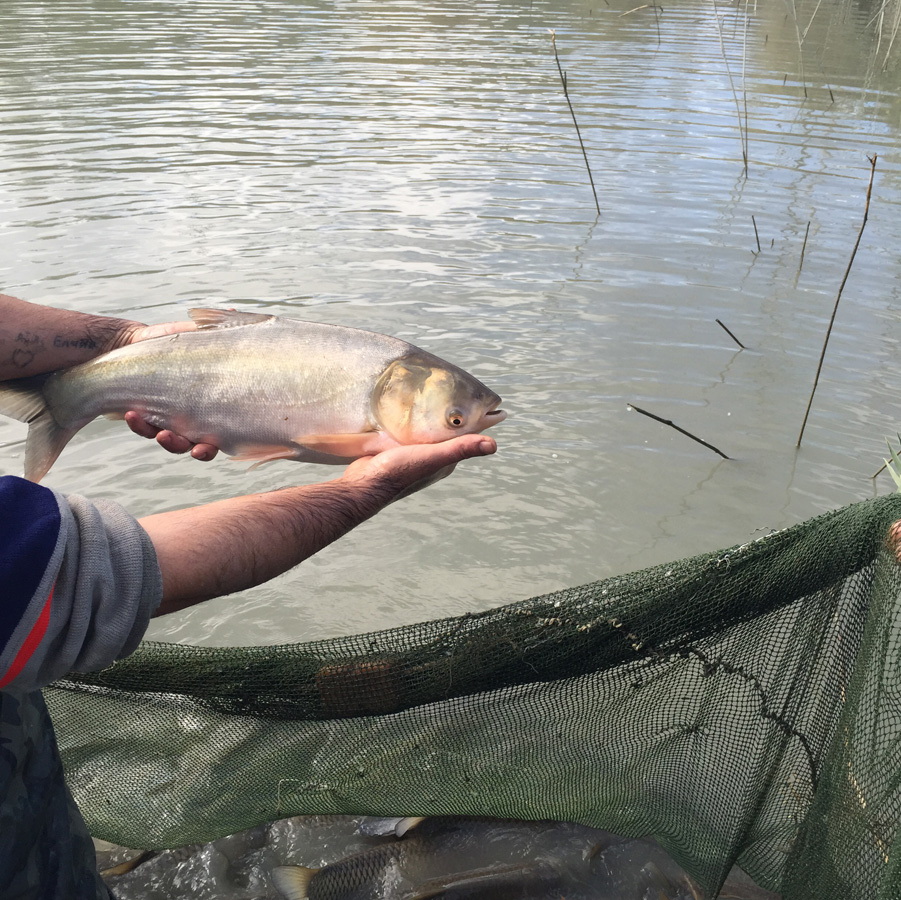Fish fattening attractive for industry

By Amina Nazarli
The Zoology Institute of Azerbaijan is studying the possibilities for artificial breeding of fish species which are bigger (if measured in weight) for sale.
Fish fattening is believed to be an attractive project for many enterprises in the industry for its commercial benefits.
Vidadi Yusibov, the research fellow of the Zoology Institute,
said that the Mingachevir laboratory has launched breeding such
species as Cyprinus caprio, Hypophtalmichthys molitrix and
Ctenopharyngodon idella for sale.
They are bred at six artificially created lakes with an area of
2,660 square meters at the territory of the laboratory. The weight
of the artificially fattened through stimulation is heavier than
those bred in natural conditions.
By intensive feeding in 2-3 years, it is possible to increase the weight of Cyprinus caprio up to 3kg and Hypophtalmichthys molitrix up to 4-5kg.
“Fish cannot get enough food in nature. Some diseases affect them preventing their growth. Here they have sterile conditions and this help avoid any bad impact. Our goal is to produce more fish for a short time and ensure people with safe products,” he said.
Yusibov added the fish grown in artificial conditions are not considered broiler fish, since these fish are fed by natural food. “Feeding of broiler chickens is different and they grow for very short time. The fish are grown in natural conditions, they produce good quality of meat which does not differ from the taste of fish living in sea ir rivers,” he explained.
Cyprinus caprio is the species related to the Azerbaijani fauna, whilst Hypophtalmichthys molitrix was brought to the domestic basins from Amur River. The species were released to the national basins in 1960, but could adapt yet.
“Acclimatization occurs if the species can both multiple and live in water basins. But, the temperature in the basins of our country does not conducive for the reproduction of Hypophtalmichthys molitrix,” he ended.
Azerbaijan, washed by the Caspian Sea, the largest closed lake on the planet, from the east has about 101 species of fish including sturgeon, thorn, white salmon, salmon, five species of the Caspian herring, omul, and carp.
The sea, with its rich natural resources, is home to 80-85 percent of the world’s sturgeons.
The Caspian, however, has witnessed a sharp tenfold decrease in the number of sprats and sturgeons over the past years. To prevent this problem, the Caspian states banned any industrial or commercial sturgeon fishing in the sea in 2014.
Azerbaijan has also intensively looked to restore balance in the fish population by releasing farms.
Tovuz fish breeding farm located at the north-west of Azerbaijan, mainly breeds carp and bream fish. Another fish breeding plant in the northern region of Gabala, has released over 400,000 young salmons - a record breaking for the country.
The annual rate of fish products consumer in Azerbaijan is 7.7 kg per capita.
In the first half of 2015 nearly 3,447 tonnes of fish were imported to Azerbaijan, which is less by about 22.5 percent compared to the same period of 2014.
--
Amina Nazarli is AzerNews’ staff journalist, follow her on
Twitter: @amina_nazarli
Follow us on Twitter @AzerNewsAz
